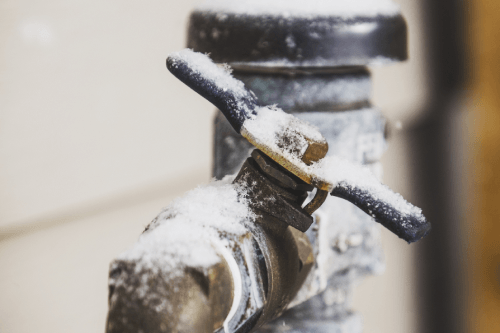In this article further down you can get some extremely good insights in regards to Helpful Tips to Prevent Frozen Pipes this Winter.

Winter can damage your pipes, particularly by freezing pipes. Below's just how to stop it from taking place and what to do if it does.
Intro
As temperatures decrease, the danger of icy pipelines increases, potentially leading to pricey repair work and water damages. Comprehending just how to prevent icy pipes is critical for homeowners in cold environments.
Avoidance Tips
Shielding prone pipes
Wrap pipelines in insulation sleeves or utilize heat tape to protect them from freezing temperatures. Focus on pipes in unheated or external locations of the home.
Heating strategies
Keep interior rooms sufficiently warmed, especially locations with plumbing. Open cupboard doors to enable warm air to circulate around pipelines under sinks.
Just how to recognize frozen pipes
Try to find decreased water circulation from faucets, uncommon smells or sounds from pipes, and noticeable frost on exposed pipes.
Long-Term Solutions
Structural changes
Think about rerouting pipelines far from exterior walls or unheated locations. Add additional insulation to attics, cellars, and crawl spaces.
Updating insulation
Buy premium insulation for pipes, attics, and walls. Proper insulation helps maintain regular temperature levels and lowers the risk of frozen pipelines.
Shielding Exterior Pipes
Garden hoses and outdoor faucets
Separate and drain pipes yard tubes prior to winter. Install frost-proof faucets or cover exterior taps with shielded caps.
Recognizing Frozen Pipelines
What creates pipelines to freeze?
Pipelines ice up when subjected to temperatures below 32 ° F (0 ° C) for extended durations. As water inside the pipelines ices up, it increases, putting pressure on the pipe wall surfaces and possibly creating them to rupture.
Risks and problems
Frozen pipes can result in water disturbances, property damages, and costly repair services. Burst pipes can flood homes and create substantial architectural damage.
Signs of Frozen Pipes
Determining icy pipes early can prevent them from rupturing.
What to Do If Your Pipelines Freeze
Immediate actions to take
If you think frozen pipes, keep faucets available to ease pressure as the ice thaws. Use a hairdryer or towels taken in hot water to thaw pipes gradually.
Verdict
Preventing icy pipelines requires proactive measures and quick actions. By recognizing the causes, signs, and safety nets, homeowners can protect their plumbing during winter.
5 Ways to Prevent Frozen Pipes
Drain Outdoor Faucets and Disconnect Hoses
First, close the shut-off valve that controls the flow of water in the pipe to your outdoor faucet. Then, head outside to disconnect and drain your hose and open the outdoor faucet to allow the water to completely drain out of the line. Turn off the faucet when done. Finally, head back to the shut-off valve and drain the remaining water inside the pipe into a bucket or container. Additionally, if you have a home irrigation system, you should consider hiring an expert to clear the system of water each year.
Insulate Pipes
One of the best and most cost-effective methods for preventing frozen water pipes is to wrap your pipes with insulation. This is especially important for areas in your home that aren’t exposed to heat, such as an attic. We suggest using foam sleeves, which can typically be found at your local hardware store.
Keep Heat Running at 65
Your pipes are located inside your walls, and the temperature there is much colder than the rest of the house. To prevent your pipes from freezing, The Insurance Information Institute suggests that you keep your home heated to at least 65 degrees, even when traveling. You may want to invest in smart devices that can keep an eye on the temperature in your home while you’re away.
Leave Water Dripping
Moving water — even a small trickle — can prevent ice from forming inside your pipes. When freezing temps are imminent, start a drip of water from all faucets that serve exposed pipes. Leaving a few faucets running will also help relieve pressure inside the pipes and help prevent a rupture if the water inside freezes.
Open Cupboard Doors
Warm your kitchen and bathroom pipes by opening cupboards and vanities. You should also leave your interior doors ajar to help warm air circulate evenly throughout your home.

Hopefully you enjoyed reading our excerpt on Preventing and dealing with frozen pipes. Thanks a ton for taking a few minutes to read our article post. Enjoyed reading our write-up? Please share it. Help another person find it. I take joy in your readership.
Click Here
Comments on “Crucial Advice for Avoiding Frozen Pipes in Winter Seasons”